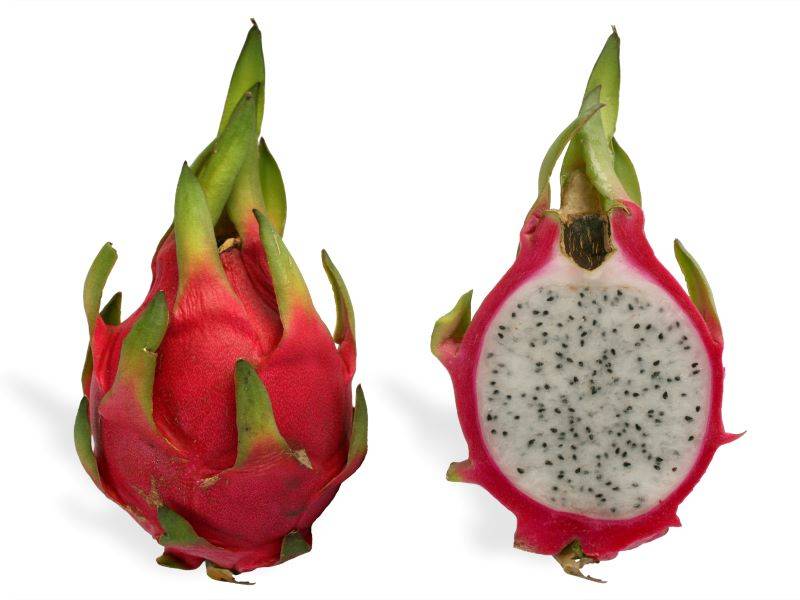
In recent years, Dragon Fruit has been a growing market in India with many farmers now trying their hands at this new crop. The fruit is usually grown in Thailand, Sri Lanka, Israel, and Vietnam but is now slowly gaining traction in India.
Climate for Dragon Fruit
One of the major merits of these crops is that it can grow in the extremes of temperature and the poorest of soils but is best suited for the tropical climate with an annual rainfall of 40-60 cm best suited for growth. Temperature ranging from 20°C- 30°C is considered best for the crop to grow.
Soil Requirement for Dragon Fruit
Dragon Fruit can be grown on almost any soils however Sandy soils that have good irrigation are generally preferred. The ph of the soil should be between 5.5 to 6.5 for a good crop. Beds should be at least 40-50 cm high.
Planting
There are two methods of growing dragon fruit, the first is the use of seeds and the second is using a cutting from the plant sampling. Seeds take a time of three years before the plant is large enough to be used so farmers generally opt for the cutting method. The length of the sapling should be 20 cm and it should be cut from the mother plant and left in the shade for 5-7 days before being planted in the field
While being planted the distance between the dragon fruit plants depends on whether the support used is vertical or horizontal. In vertical support, the distance between the plants should be 2-3 metre while in horizontal support the distance is reduced to almost 50 cm and allows for intensive farming.
The vertical support should be between 1 to 1.20 meter high while the horizontal support should be between 1.40 to 1.60 metre for appropriate growth.
Pest Treatment for Dragon Fruit
The land should be treated with fertilisers in mounds. The fertilisers used should be 20-kilogram organic fertilisers 0.5 kilograms superphosphate and 1kg of NPK16-16-8 should be used per 50 postings before the actual plantings of dragon fruit plants.
During the plantation stage, 50 grams of Urea combined with 50 grams of phosphate should be used three times a year during the first year.
Irrigation
Since the plant requires less water irrigation is recommended once a week and drip irrigation should be used for better efficiency.
Harvesting of Dragon Fruit
The fruit requires 27-30 days to fully grow. The fruit should be picked as soon it is fully grown as even a delay of 4-5 days can cause it to rot. The expected yield per hectare can vary from 10 to 30 hectares depending on the conditions and techniques used. The techniques of picking it are twisting it in a clockwise direction and plucking it.
Varieties of Dragon Fruit
There are several varieties of Dragon Fruit that are grown and the famous varieties are
-
Hylocereus undatus: Also known as Pitahaya, the variety has a white flesh with pink skin. The fruit is 6-12 cm in length and 4-9 cm in thickness with edible black seeds
-
Hylocereus polyrhizus: Also knows as Red Pitaya, it is recognised by its red flesh with its pink skin. It is native to Mexico but is now grown in many countries.
-
Hylocereus costaricencis: The variety is known for its violet red flesh and pink skin. It is also known as Costa Rican Pitaya as it is native to Costa Rica. The fruit is magenta and the seeds are pear-shaped.
-
Hylocereus (Selenicerus) megalanthus: This variety is native to South America and is characterised by its white flesh with yellow skin.
The Niti Aayog in its report in 2017 named “Doubling Farmers’ Income” had said that crop diversification is a major step that all farmers must take to increase their incomes. Dragon Fruit is one of the major crops that could be adopted for this measure with demand for it increasing every year. According to the Indian Council of Agriculture Research (ICAR), the fruit can be sold between Rs. 200-250 per kg and thus can fetch a huge profit for the farmers.
















